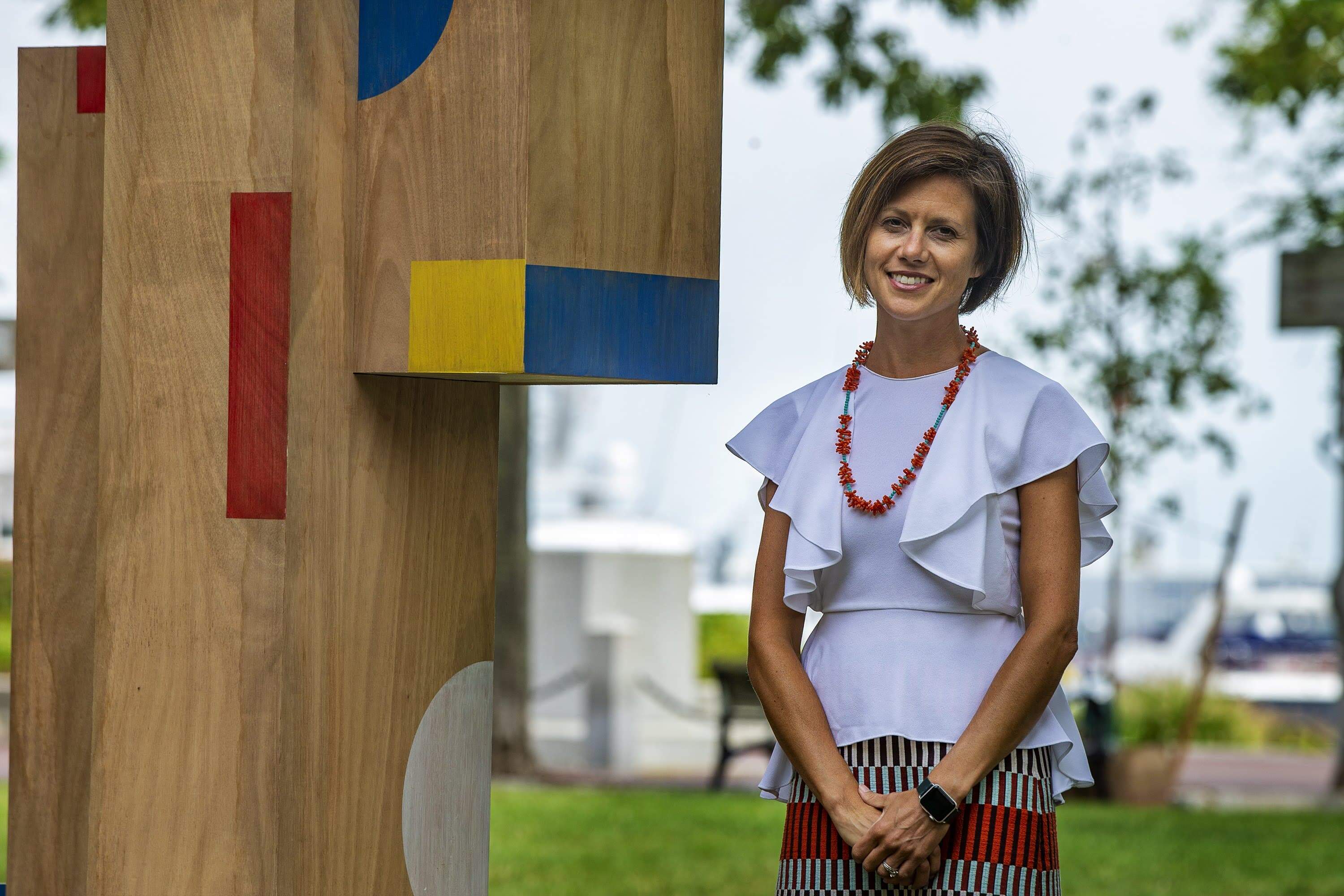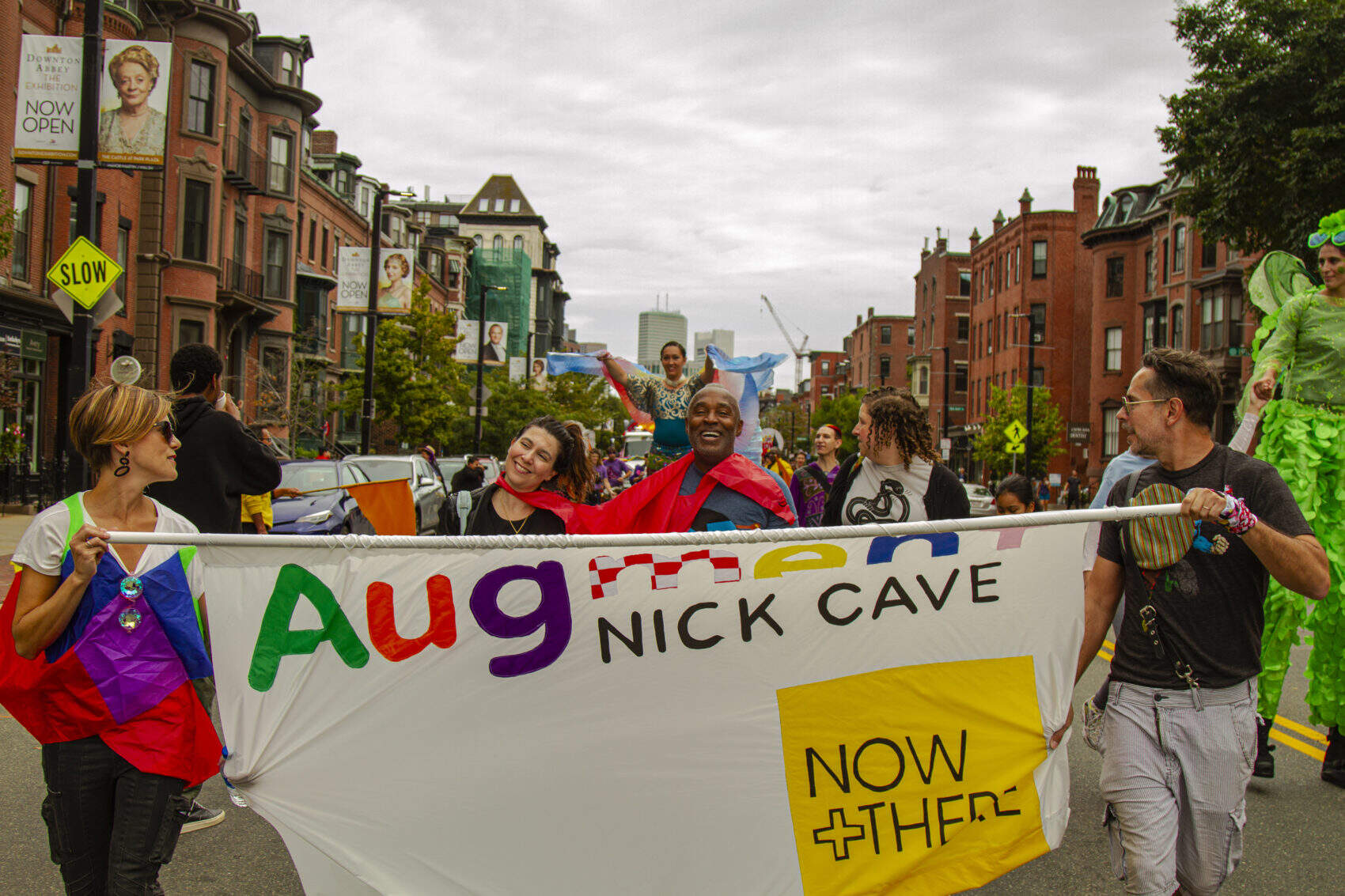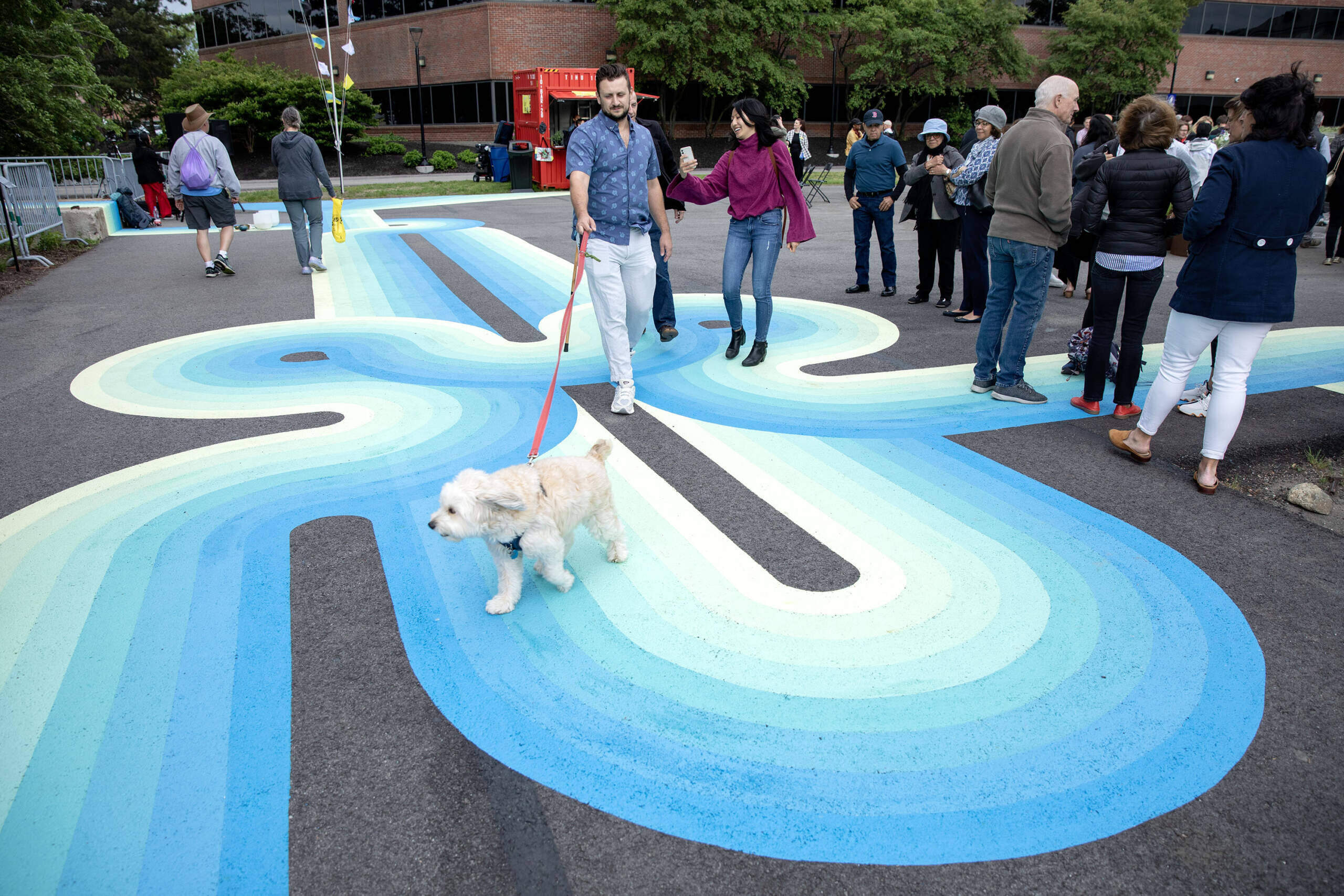Advertisement
Boston will host its first 'Public Art Triennial' in 2025
Over the past 10 years, Now + There — a public art nonprofit and accelerator — has commissioned 52 participatory, site-specific sculptures and murals to enrich Boston’s landscape. Perhaps you encountered international artist Nick Cave’s colorful “Joy Parade,” “The Shape of Play” by Sari Carol in the North End's Christopher Columbus Park, Cambridge-based artist Cecily Carew's “Ambrosia” inside the Prudential Center, or local artist Massiel Grullon’s eye-popping ground mural “Knotical Waves” near the Charlestown Navy Yard.
Now + There’s founding mission was, and still is, to “build a public art city.” That vision is expanding with plans to launch the Boston Public Art Triennial in May 2025. The massive endeavor also ushers in a name change for the organization. To learn more, I spoke with founder and executive director Kate Gilbert about transforming Now + There’s legacy into a public art festival. Questions and answers have been edited for clarity.

You founded Now + There 10 years ago after getting your MFA from the School of the Museum of Fine Arts at Tufts University. Since then, countless residents and visitors have encountered your organization’s work in parks and other public spaces — but they might not be aware of the mission. Can you go back in time to remind us?
Kate Gilbert: I started Now + There in 2015 because there wasn't as much contemporary art in our public spaces as you would expect to see in a city. There were artists with great projects that needed help moving that work outside. There have always been, and continue to be, amazing contemporary projects in our museums and institutions, but there's been this barrier to enter. So we started Now + There as a way to open minds, conversations and spaces around all of Boston's 23 neighborhoods. We were engaging community in the work and inviting international artists.

We had Nick Cave, and that amazing “Joy Parade” that took people from the South End to Upham's Corner. And we were supporting local artists. After six years of doing this, we found that it wasn't having the impact that we had hoped. As wonderful it is to come around the corner and see a piece of work that asks a question — about what brings you joy, or reminds us about the climate crisis — it didn't build conversations and community cohesion that can happen when we're together in public space.
As a board and staff, what we really want to do is build a public art city. And it seemed that we needed to make this effort much bigger and more understandable, and that meant focusing. So it's a triennial. It is a festival. It happens over six months.
To be clear, the festival’s birth represents a name change for Now + There?
We had to change our name to make it, again, more accessible. Now + There does not translate well into other languages. And if we're looking towards a more vibrant city, we need to make these entry points a little bit broader. So now we are the Boston Public Art Triennial. It says where we are, what we're doing, and the triennial is the biggest focus of our work every three years, starting in 2025.
What will we encounter at this Triennial?
People will encounter 15 new commissions. These are all public works that are outside and accessible. They're by international artists, national artists, local artists, and they are all tied together through this theme of “Exchange.” [See the participating artists' names below.] Each triennial will have a new theme. This theme was created by artistic director Pedro Alonzo and his co-curator Tess Lukey. So, this idea of exchange brings together artists as storytellers and experts in the field within the Boston region. We're hoping there's a relationship between the artists and the experts that makes for a richer conversation with the works that are created.
All of our works have always had a moment of participation or reciprocity in them. That can happen between the audience member and the artwork, or the creation of the artwork with the communities that are engaged. And then, at a larger level, I hope there is a relationship between Boston and the nation, and maybe even the globe.
We have incredible, innovative things that are happening, not just in tech and science, but also culturally and civically. We’re a state and a city that are really pushing new boundaries, and we don't celebrate that enough.

How will this ambitious festival unfold?
It's a big undertaking, it's across the city. We're committed to half of the projects being in an easy to reach downtown loop, then half of the projects radiating out into the neighborhoods. And for this iteration, we're prioritizing Roxbury, Dorchester, Mattapan, and East Boston.
I'm so grateful to the City of Boston for being a partner. This is the only public art triennial in the nation that is in concert with a city or a municipal group.
Our hope is that come May 22 [2025], suddenly the city is alive with public art. We have 15 new commissions that will, as much as possible, open up at the same time, along with the additional works that the major museums will have commissioned [these include the Institute of Contemporary Art, the Isabella Stewart Gardner Museum, MIT’s List Visual Arts Center and the Museum of Fine Arts].
We have a lot of support on the outside, a fabulous board, a triennial advisory board, a community engagement board and a curatorial group. So there are a lot of people behind this effort. I'm very proud that we've raised almost $7 million to date. There's a lot more to go.
What are your dreams for the Boston Public Art Triennial when it kicks off?
My hopes are actually quite simple: that it brings people together. I love this idea of “collective effervescence.” I just learned about it recently, and it’s that moment when the audience suddenly starts applauding and singing together. I want to see that happen every day throughout the Triennial at a small scale. It can be walking up to a new sculpture, meeting the public art ambassador there who might be a youth from the neighborhood, and having just one joyful, exciting conversation.
I do want to see that artists are honored, and really recognized, for their ability to tell stories differently and help us to see new, more equitable futures. I do want to see civic and cultural participation. People need to show up for this. This is for us and by us.
Beatriz Cortez (Los Angeles), Julian Charriére (Berlin), Adela Goldbard (Rhode Island and Mexico City), Stephen Hamilton (Boston), Cannupa Hanska Luger (New Mexico), Laura Lima (Rio de Janeiro), Ekene Ijeoma (Boston), Nicholas Galanin (Alaska) co-curated with MassArt Art Museum, Patrick Martinez (Los Angeles), Delcy Morelos (Bogotá), New Red Order (Adam Khalil, Zack Khalil, Jackson Polys, all based in New York), Gabriel Sosa (Boston), Lan Tuazon (Chicago), Swoon (New York). Another three local artists will be selected for the Triennial via an open call for the Triennial Accelerator program.
